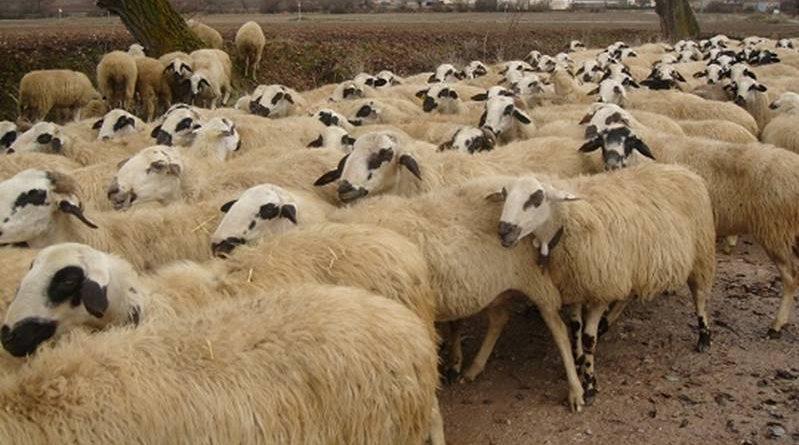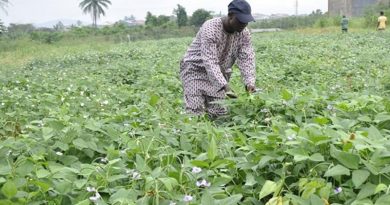Major progress made towards eradicating sheep and goat plague – FAO
Globally, the number of outbreaks of Peste des petits ruminants (PPR), also known as sheep and goat plague, fell by two-thirds in recent years, showing the commitment of the international community to combatting this highly contagious animal disease and raising hopes for meeting the goal of global eradication by 2030.
PPR can be deadly for animals – with a 30-70 percent fatality rate – but it does not infect people. That said, PPR has major effects on people due to the severe impact of PPR on food security, community resilience, and livelihoods. Just over 1,200 global PPR outbreaks were recorded in 2019 (latest data available) compared to more than 3,500 in 2015 according to new data from the Food and Agriculture Organization of the United Nations (FAO) and partners.
The decrease in PPR outbreaks is attributed to the impact of vaccination campaigns in more than 50 countries. The campaigns were led and funded by countries with support from FAO and partners. In just 12 of these countries, over 300 million goats and sheep were vaccinated between 2015 and 2018.
Two regions have been the worst hit by PPR, and reported the majority of outbreaks between 2015-2019 – Asia over 75 percent and Africa over 24 percent, although the disease may also be underreported. Nearly half of all outbreaks in this period occurred in only five countries, highlighting the urgent need for strengthening prevention and control mechanisms.
PPR has spread at an alarming rate over the last 15 years; more than 70 countries – mostly in Asia, Africa and the Middle East – have reported the disease since it was first identified in Côte d’Ivoire in the 1940s. At its worst, the disease threatens to infect up to 80 percent of the world’s 2.5 billion small ruminants if not controlled, putting enormous pressure on some of the world’s most vulnerable people.
About 300 million families rely on small ruminants, such as sheep and goats, as a source of food and income, and are at risk of losing their livelihoods if the disease is not kept at bay. It is also estimated that PPR causes economic losses up to $2.1 billion per year.
Although it was first considered as a rinderpest-like disease of small domestic ruminants, in the recent past, PPR has also infected camels, cattle, water buffalo and a range of wildlife species – from the African buffalo to the saiga antelope in Asia.
The road to eradicating PPR
In 2015, the international community set the goal of eradicating PPR by 2030, and, since then, FAO and the World Organisation for Animal Health (OIE) have developed and implemented a Global PPR Control and Eradication Strategy.
“Eradicating the disease is possible and essential to ending poverty and hunger. Not only would it save a valuable source of food and income for many vulnerable people but could also prevent entire families from migrating – a risk they face when their livelihoods are destroyed. A world free of PPR will also mean more security and empowerment for rural women as they are often responsible for looking after livestock,” said Maria Helena Semedo, FAO Deputy Director-General.
As of May 2020 (latest data available), 58 countries and one region in Namibia have been recognized as free of PPR – with Russia and Lesotho, the latest countries added to the list last year. In addition, 21 countries, which have had no new cases for five consecutive years, can prepare their documentation for validation by OIE for a PPR-free status.
Vaccination is essential for PPR prevention and control based on experience from the successful global eradication of rinderpest in 2011 by FAO, OIE, and their partners, and the availability of effective PPR vaccines. FAO and OIE recommend that PPR vaccination should be rolled out during two successive years, followed by vaccination of newborn animals during one or two successive years.
Main obstacles in the fight against PPR
“Whilst PPR outbreaks have decreased significantly in recent years, the infection scope of the PPR virus, both geographical and host range, is still wide, and more needs to be done to fight the disease,” said FAO’s PPR Programme Coordinator and veterinarian Felix Njeumi.
Shortage of vaccines, livestock movement, and mostly logistical challenges in carrying out vaccinations continue to remain the main obstacles for PPR prevention and control. The cost of one vaccine dose represents around one-eight of the cost of vaccine delivery.
While thermotolerant technology is available, none of the existing vaccines are thermotolerant, and most PPR endemic countries are in tropical or subtropical regions with limited cold-chain resources for vaccine storage and transport. Current existing vaccines also do not differentiate between infected and vaccinated animals.
The first phase of the global PPR programme set a target of vaccinating 1.5 billion small ruminants by the end of 2021. As of mid-2020, around half of this target had been achieved, with the COVID-19 pandemic having significantly disrupted animal health services, including PPR vaccinations and outbreak reporting, last year. These disruptions continue in 2021 as the world is still grappling with the pandemic.
FAO also stresses the need for prevention and control measures to be coordinated between neighboring countries to restrict the transboundary movement of disease. Strengthening surveillance and post-vaccination sero-monitoring at the country level is also essential.
The funding gap for the PPR Global Eradication Program is estimated at $340 million. Challenges, both financial and logistical, remain. However, the latest data show progress, reflecting the commitment of countries and FAO, OIE to eradicate PPR, and give cause for optimism. The second phase (2022-2027) of the programme will be formulated in 2021.




